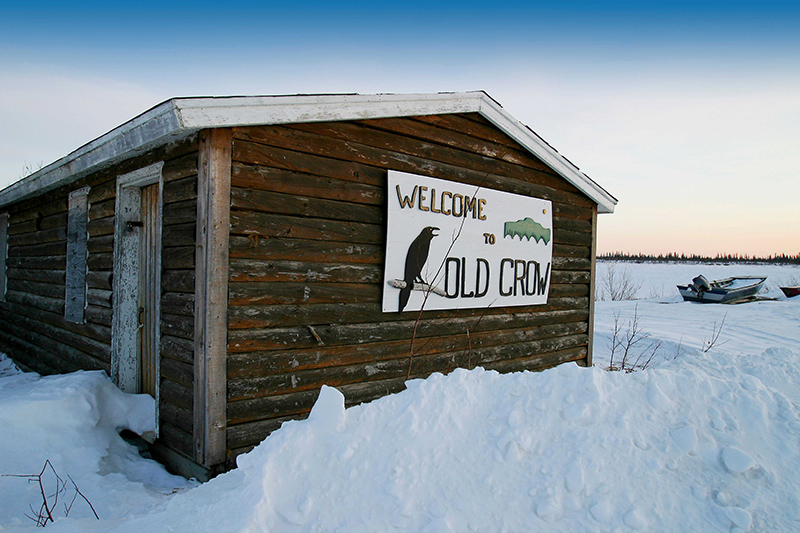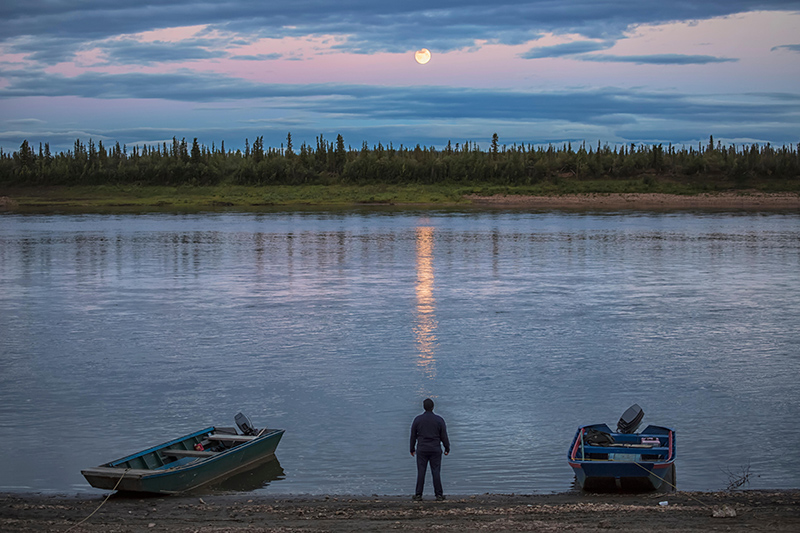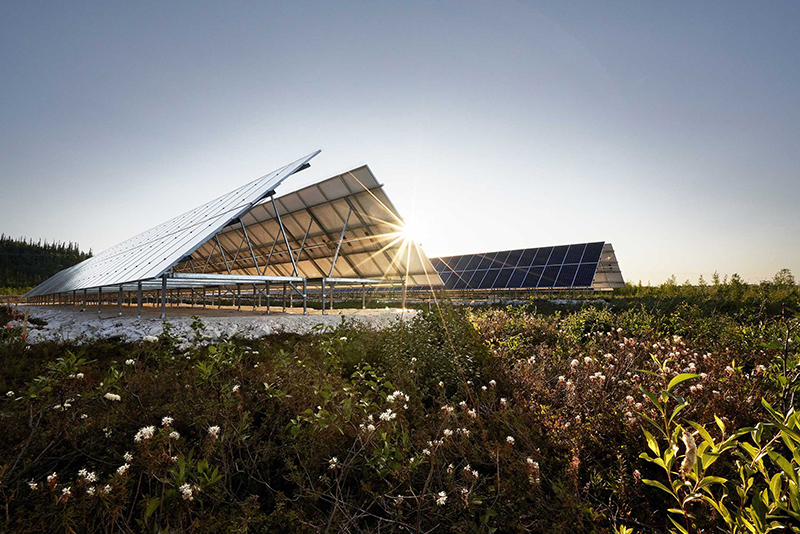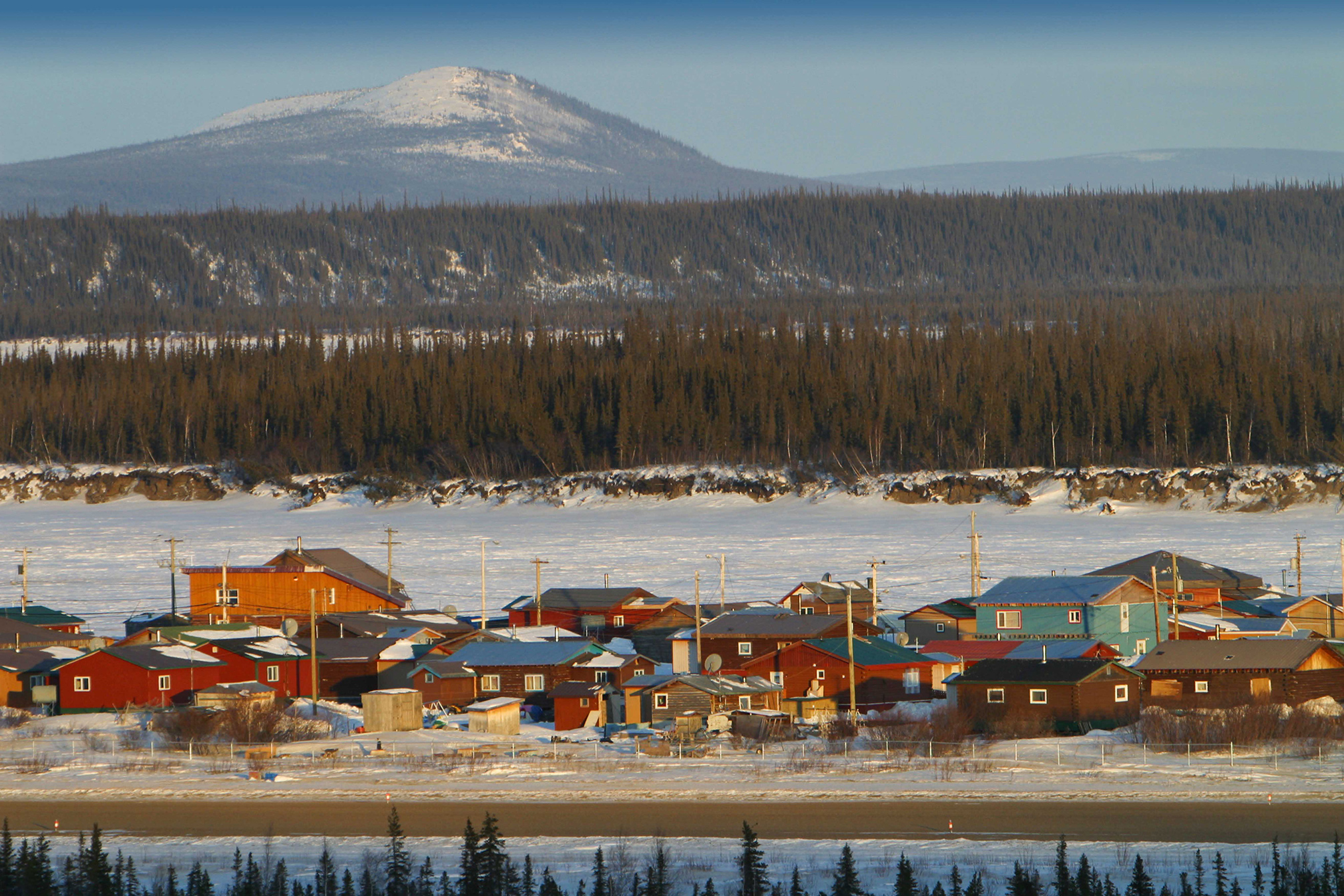Last summer, the settlement of Old Crow flipped a switch and started generating electricity from newly installed solar panels. The small Yukon community, located just north of the Arctic Circle, had until then been completely dependent on diesel generators. The solar panels allow it to run on clean energy during the long Arctic summer days, and will eventually create more electricity than the community can use.
But when the extended winter nights come, Old Crow will still rely on the generators. There is simply no good way to store all that surplus electricity for use after the sun stops shining.
A project led by U of T could change that. Old Crow has agreed to take part in a new initiative called CanStore Energy, which will draw electricity from green sources such as solar, wind and hydroelectric and use it to create a carbon-neutral fuel. If residents decide it makes sense for the community, Old Crow could eventually manufacture its own fuel using solar electricity in the summer and substitute it for at least some of the diesel it uses in the winters.

CanStore Energy, conceived in 2020 by U of T and several other university partners, is intended to help address climate change with a technology called carbon dioxide conversion. The project includes scientists and engineers, but also political and social scientists, economists and business specialists from U of T and the other universities.
Over the next six years, CanStore will focus on two case studies –one in Canada’s Far North and one in the south, with an emphasis on working closely with community partners. “The whole approach of CanStore Energy is to assess the communities’ needs first. What sort of energy sources do you have? What do you need? What’s the gap?” says the project leader, David Sinton, a U of T professor in the department of mechanical and industrial engineering and the Canada Research Chair in Microfluidics and Energy.
He notes that this level of community engagement is uncommon for these kinds of projects. “Usually engineers – and I’m guilty of this too – are like, ‘Oh, gosh, let’s just get going.’ I think it’s a bit surprising for some that the fastest way to deployable technologies is to start with the community.”
CanStore Energy is one piece of a much larger effort at U of T called the Climate Positive Energy Initiative, which Sinton also directs. This initiative brings together more than 100 faculty from a variety of disciplines across the three campuses, as well as a large network of graduate students and postdoctoral fellows, to collaborate on the global challenge to reduce greenhouse gas emissions from energy. The goal is to help Canada and the rest of the world achieve net-negative carbon emissions by 2050, while ensuring that all communities, regardless of location or income level, gain access to clean energy.

“For my work within the initiative, one of the things that we think about is how we can make this clean energy transformation in a way that doesn’t just keep exacerbating inequalities, but instead tries to address them so that people can live better lives as well as being powered by sustainable energy,” says Laura Tozer, an assistant professor in the department of physical and environmental sciences at U of T Scarborough.
“We have to think about who bears the consequences and who benefits as we make this transformation,” she says.
We have seen again and again with technologies that if communities are not involved in developing them, they often are a mismatch.”
Although solar power and wind power have become inexpensive to produce, they only produce electricity when the sun is shining or the wind is blowing. “That’s one of the biggest reasons you don’t see solar cells and wind power everywhere today,” says Brandon Sutherland, the executive director of U of T’s Alliance for AI-Accelerated Materials Discovery, and a contributor to the project. “They’re actually really cheap. But storage is too expensive.”
The carbon conversion technology being developed by CanStore Energy uses electricity to transform carbon dioxide into fuel or other chemicals. The idea is to either capture the carbon dioxide from smokestacks before it can be released to the atmosphere or pull it directly out of the air. Once you have the carbon dioxide, you use clean electricity and water to make it into fuel, such as ethanol or methanol, or an economically useful chemical. This process does not contribute to net carbon emissions.
Building community trust is key
Kate Neville, an associate professor of environmental politics at U of T, is leading the part of the Old Crow project that focuses on community concerns. She has studied issues such as local resistance to energy proposals. The key to success, she says, is to make sure that the solution truly works for the people affected.
For instance, the Old Crow community instigated – and was fully involved with – the solar panel project. When it was suggested that the best place for the panels was in a clearing where people picked berries, the Elders pushed back. In the end, the panels were placed among the berry patches in a way that didn’t destroy the patches and allowed picking to continue.
“One of the things we have seen again and again with technologies is that if communities are not involved in developing them, they often are a mismatch,” Neville says.
One of the research partners in CanStore’s northern pilot project is Michael Ross (BASc 2008), the Industrial Research Chair in Northern Energy Innovation at Yukon University. He emphasizes that building trusting relationships is vital for projects to succeed. “There’s a track record of snake-oil salesmen going into the North and saying, ‘Yes, we could solve these problems,’ but they don’t. There’s a level of distrust,” he says, which needs to be addressed.
After the community has outlined its needs and the technologists have proposed a solution, another team will analyze the proposal to consider environmental, social and economic implications throughout the life of the project. Leading that effort is Heather MacLean, a U of T professor in the department of civil and mineral engineering and the Canada Research Chair in Sustainable Systems and Technology Assessment. Her team will look at larger systems issues, like where the carbon dioxide will come from, how much energy it will take to provide it and whether the technology is a good fit for the community. “Understanding the implications of large-scale use of these technologies is going to be really critical,” she says.

For CanStore’s pilot project in southern Canada, the researchers are considering teaming up with an industrial partner to capture carbon dioxide from smokestacks. In this case, the project could still produce net-zero fuel, but it might be more useful to create chemicals that the industrial partner could either use or sell to another company.
By the time the case studies are complete six years from now, Sinton hopes the technology will have developed to the point that it can attract investment and expand into a commercial or government solution for clean energy in all parts of the country.
In the meantime, he says the larger Climate Positive Energy Initiative will aim to develop a wide range of clean-energy solutions – always with an eye on human and societal considerations, such as who benefits from new renewable energy projects, and who suffers negative consequences from where they are placed or how they are operated.
“CanStore Energy is just a small part of what the Climate Positive Energy Initiative is going to be,” he says. “It’s letting us flex that muscle, but it’s just a warm-up exercise.”







No Responses to “ Canada’s Path to Clean Energy ”
Really interesting and informative article. Beautiful photography. I used to live in Old Crow and I know it was being studied about 30 years ago for archeological reasons. Some believed it was the oldest places in North America to be inhabited by humans. Now, it's leading in science and technology. I wonder what a dig there will show in 30,000 years.
I'm 15 and I'm looking at universities and colleges already. I came across this article and it's very fascinating to me. I love all things science and this is very well-written. I truly believe this will help many people. Keep up the good work and amazing writing!